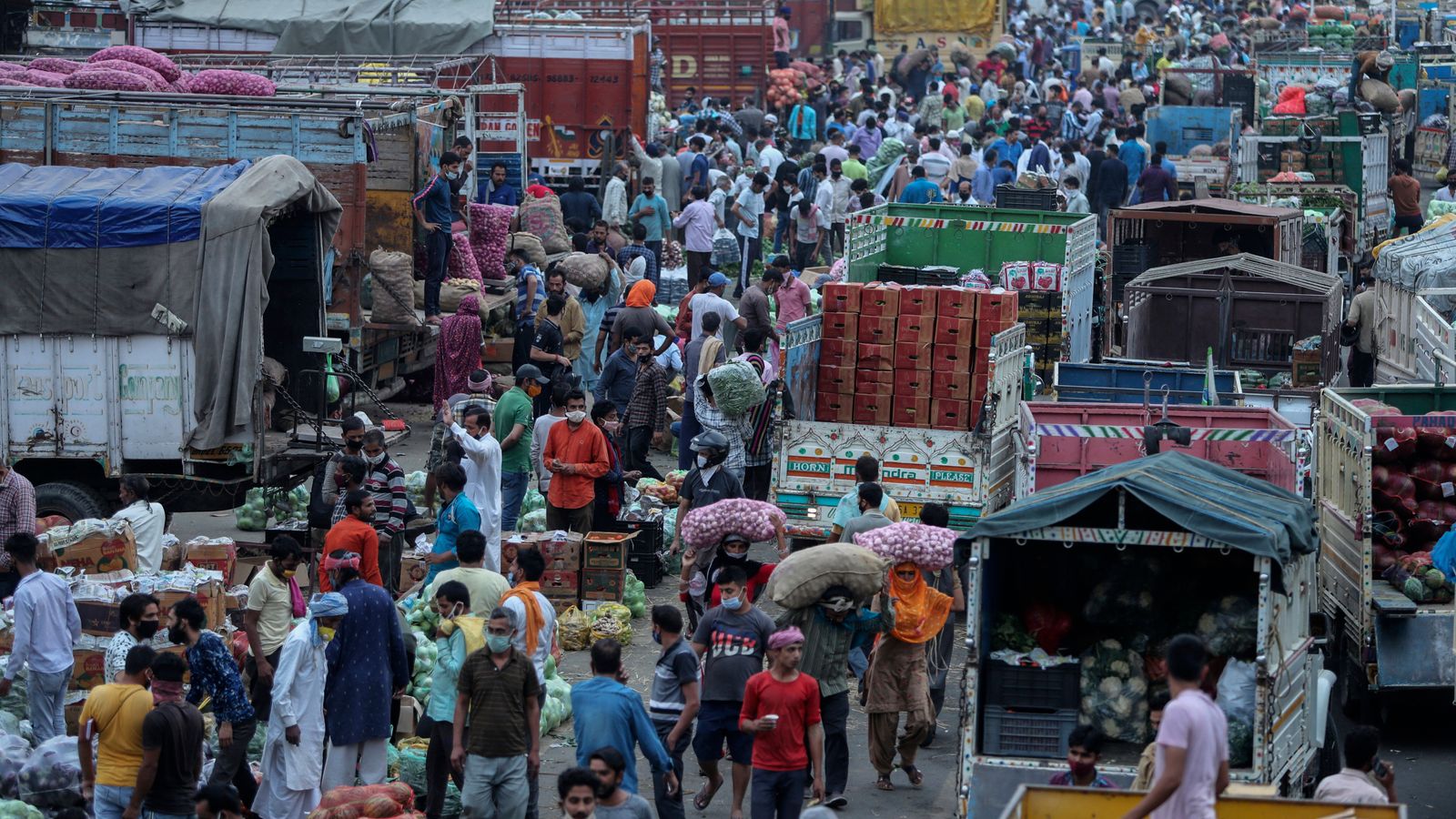If the state of Uttar Pradesh (UP) were to be a country, it would be ranked the fifth largest country in the world in terms of population.
With almost 240 million people, this northern state contributes a sixth of the country’s 1.38 billion citizens.
To put this in context, it’s the combined population of Britain, France, Italy and Spain.
To stem the growing population, the state’s Chief Minister Yogi Aditayanath, a Hindu right-wing nationalist, has announced a new controversial population policy.
The two-child policy is set to deny government jobs and promotions, subsidies, government welfare programmes and the right to contest local elections to people with more than two children.
It is also incentivising people to have fewer children.
Critics accuse him of targeting the Muslim minority community with the policy for political gain.
The Chief Minister insists the policy is to “ensure there is population balance among various sections of society” and it is “to bring a path of happiness and prosperity in the life of every citizen”.
“Across the world concerns have been raised from time to time about increasing population being a hurdle to development,” he said.
“Discussions have been going on for four decades. The increase in population contributes to poverty in society.”
Opposition parties have called it a “political agenda before next year’s elections and the murder of democracy”.
Critics say it is dog whistle politics by the firebrand Hindu priest who has spearheaded polarisation when it comes to inter-faith marriage – what he calls “love jihad” and religious conversions.
The policy aims to reduce the state’s birth rate from 2.7 to 2.1 by 2026 and to 1.7 by 2030.
It also seeks to increase the modern contraceptive prevalence rate from 31.7% to 45% in the next five years and increase male contraceptives use from 10.8 % to 15.1% by 2026.
According to a UN report, India is set to overtake China in 2027 as the world’s most populated country.
But according to the National Family Survey and Census, the country is not witnessing a “population explosion”.
Over the years the Total Fertility Rate (TFR) has consistently fallen, from 3.4 in 1994 to 2.2. In most states it has dipped even below the replacement level of 2.1.
The UP government is not the first to announce population control measures. Other states have done it but there is no empirical data on the success of these programmes.
Studies in some states where these laws are implemented have shown an increase in sex-selection abortions, divorces, and abandonment of children.
While MPs have written to the president on a two-child norm, many cases have been brought to the Supreme Court to implement this policy.
Assam is another BJP-run state where a law similar to that of UP is in place. Restrictions of government jobs, welfare and subsidies are denied to parents of more than two children.
The apprehension is this law will arm the government with more powers over its citizens.
Using empirical data SY Quraishi in his book The Population Myth says “though Muslims have the highest birth rate, Hindus are not far behind”.
“For the last three decades the total fertility rate for Muslims has fallen faster than the majority Hindus,” he wrote.
“Myths have been created by right wing Hindu groups to demonise Muslims on polygamy and family planning. If you repeat a lie a hundred times, it becomes the truth.”






















